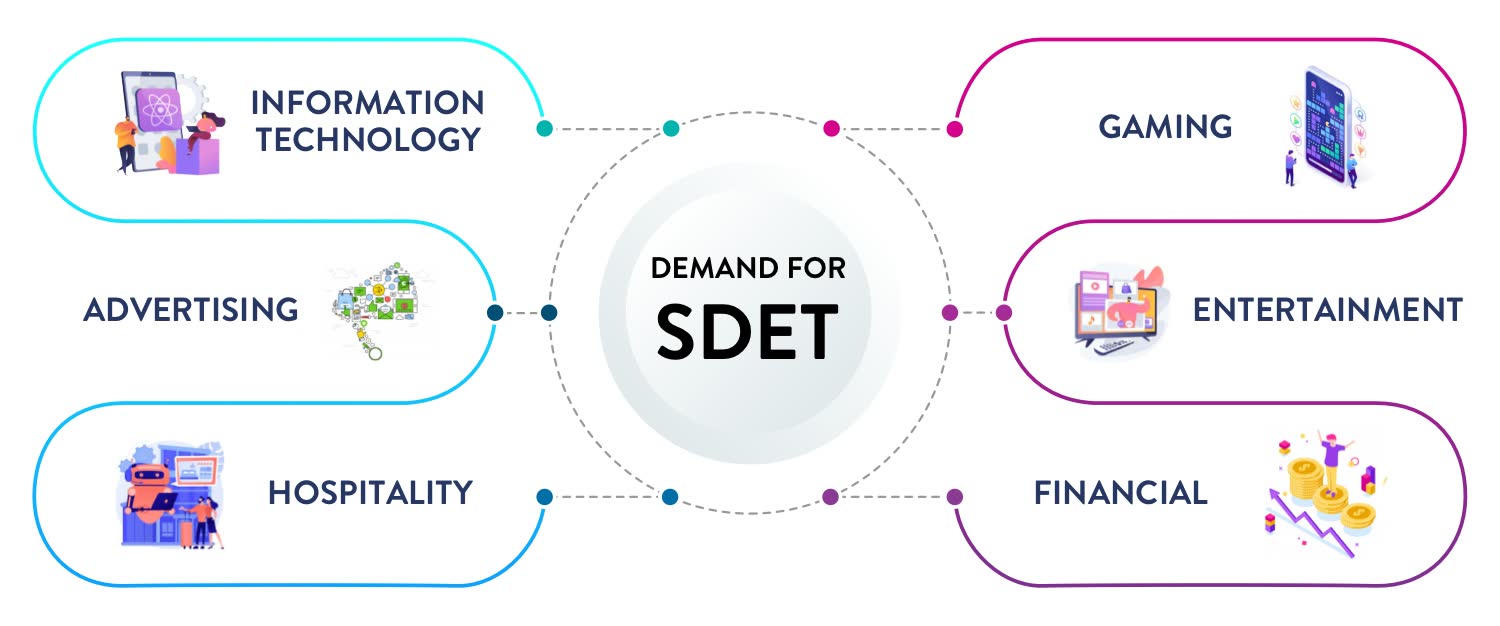An SDET is a technical software tester focused on the development of automated test scripts.
SDETs, the hybrid of a software developer and a tester, are in high demand. Just like full-stack developers in the developer profile, SDETs are full-stack QA. An SDET is expected to perform functional testing, automate the same workflows or APIs, and perform load testing if necessary. They are in demand across the tech industry, and that demand is only expected to grow in the coming time.

They are crucial for maintaining high quality, and quicker go-to-market with their dual capabilities in the field of performing tests and code creation.
SDETs possess a very strong knowledge of technical, analytical, and problem-solving skills which helps write as well as test code.
SDETs life cycle is purely aligned with roles and responsibilities based on Agile methodology where they are assigned continuously to write, test, and fix the code issues themselves.
As SDET keeps growing in the ecosystem the development has become one of the crucial parts. The Scope goes viral with specialized testing knowledge on Multiple tools, processes, techniques, and best practices. Based on their development experience, SDET are required to code and test on their own with the knowledge of technical architecture and design, and their programming skills.
An SDET’s responsibilities include:
- Knowing how to perform test automation (building robust, scalable, and high-quality tests for functional and performance testing).
- Being able to provide technical support and address customer queries and reviews.
- Ensuring that the developed product follows the flow of code and interacts with every different component as intended.
- Setting up the framework for automation tests and performing them, and creating various test environments and acceptance tests.
- Performing high-class debugging and preparing bug reports.
- Researching the latest trends and technologies, and developing test tools to constantly push the product’s quality better than existing practices and processes.
- Planning and estimating test elements, functional flows, and product designs.

Departments that have a high demand for SDETs:
SDET professionals are known to quickly embrace new methodologies and technology. This makes them an essential part of the following sectors:
- IT
- Gaming
- Advertising
- Entertainment
- Financial
- Hospitality
What are the Advantages of SDET?
SDETs are also engineers
SDETs provide insights about every department, be it software design, data design, or user interface. They are also technically excellent at programming languages and database ideas.
SDET can code and test
An SDET is capable of developing and testing products that meet customer requirements while also testing all the products developed by the company.
The testing starts at the functional level, followed by product performance and acceptance testing. SDETs can effortlessly juggle multiple testing types, even automating the acceptance test.
The brain and the heart of the whole process
SDETs can manage their experiences with the customers or end-users. And also they can build the part of project management effectively. Thus, this across the board presentation and range of skills make SDETs the brain and heart of the software procedure.
SDET is an Enduser Guide
The voice of SDET is all about the product. As they have multiple interests in Product configuration,end-user, and software development. Overall they concentrate on the requirement for a product so they are the best client supporters. The Significant need for software testing shows when and how to test the product and be acknowledged all over the world.
Conclusion
With overall testing knowledge on various tools, procedures, strategies, and best practices, testing has turned out to be a critical part of a development environment, and SDETs have rightfully marked a place for themselves as all-rounders.







